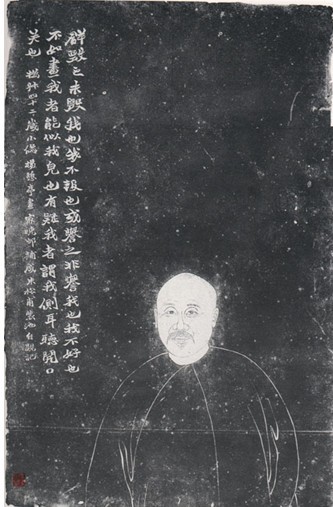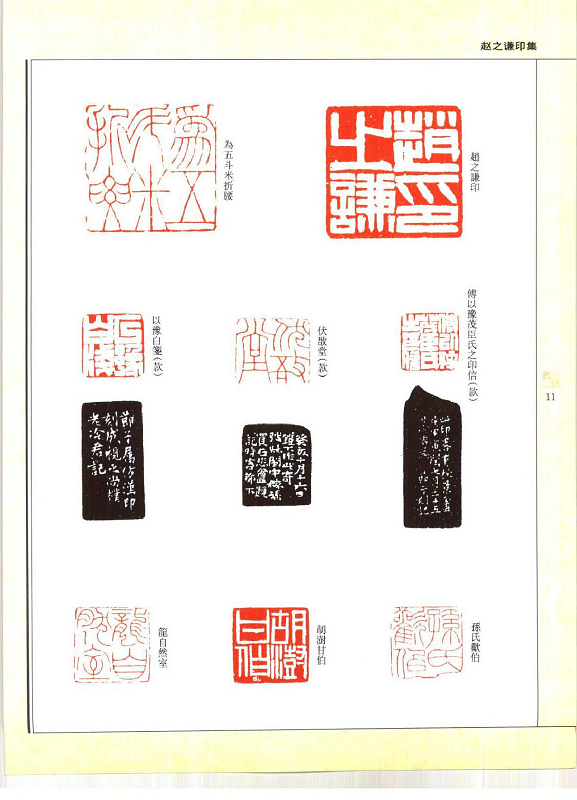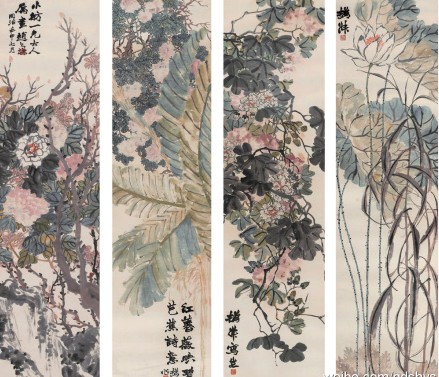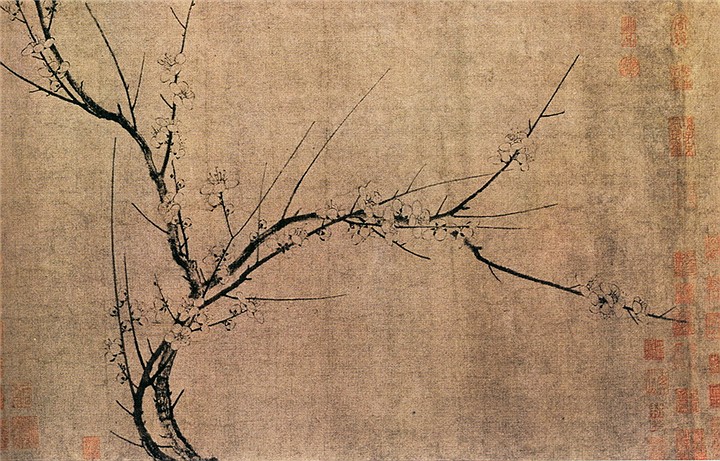Painting Scroll of Plum Blossom by Zhao Zhiqian in Qing Dynasty

Qing Dynasty (1636--1912)
Painting on paper
By Zhao Zhiqian(1829—1884)
Width: 66.2cm,Length: 135.8cm
Depicted on this painting are a plum tree with white blossoms and another one with red ones in full bloom. It is so vivid and vigorous that the branches, full of blooming flowers, are seem to rush out of the painting. With the red blossom branches stretching towards the white ones, it seems that the two trees are answering and responding to each other. Some Chinese characters are written at the left bottom of the scroll, explaining that this painting was a gift from Zhao Zhiqian to a friend named Hou. Two seals are marked on the painting; one was by Zhao Zhiqian, and the other by Zhao Huishu.
深入探索
About Zhao Zhiqian, the Leading Scholar-Artist of his Day
Zhao Zhiqian (1829-1884) was a renowned Chinese calligrapher, seal carver and painter in the late Qing Dynasty, "the leading scholar-artist of his day." He is also known under the courtesy name of Yifu and his pseudonym of Lengjun, which he changed to Huishu and Bei’an respectively later in his life.

Zhao Zhiqian grew up in a merchant family, but undertook a classical education in order to pursue a career in government. Passing the provincial civil service examination in 1859, Zhao spent the next twelve years in Beijing, selling his art while trying unsuccessfully to pass the palace examination, before being appointed to a post as district magistrate in Jiangxi Province in 1872.

Zhao was equally renowned as a calligrapher, seal carver, and painter. In his calligraphy, Zhao is best known for a distinctive "square brush" style derived from the engraved stone writings of the Northern Wei dynasty (386–534). Zhao’s seal carving also had profound influence on the later masters, such as Wu Changshuo and Qi Baishi


Four Flower Screens by Zhao Zhiqian

Painting Scroll (partial) of Plum Blossom by Yang Wujiu in Song Dynasty (960—1279)
From the collection of Palace Museum

“Plum Blossom, Rockwork and Bird” by Chen Hongshou in Ming Dynasty (1368—1644)
From the collection of Taipei’s National Palace Museum



